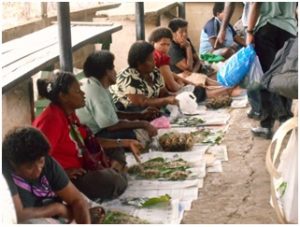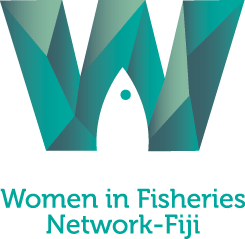In 2014, with support from the Pacific Community (SPC), Women in Fisheries Network – Fiji (WiFN-Fiji) contracted gender and fisheries consultant Aliti Vunisea to undertake a scoping study to review the current status of women engaged in the fisheries sector in Fiji. That study helped to identify gaps and opportunities that the Network could strengthen or support.
The objective of this report was to complete a review of the current status of women engaged in fisheries in Fiji The review was designed to: (a) highlight how much the women in fisheries work has advanced, (b) the challenges women still face in Fiji, and (c) the key gaps and opportunities for the WiFN-Fiji.
Women fishers continue to predominantly fish in the coastal areas of Fiji, however, in the last decade their fishing activities has undergone significant changes with higher involvement on marketing and distribution of products with selling and buying networks becoming more organized and women increasingly engaging not only as fishers but as middle sellers, buyers and increasingly involved in the development of value added products. Participation in the offshore fisheries sector has not changed much where women’s involvement continue to dominantly be in the processing sector in Pacific Fishing Company Limited (PAFCO) and the long line tuna shore based activities.

Women selling at the Suva and Nausori Markets. Photograph ©A.Vunisea
Although women have contributed substantially to fisheries development and management in coastal communities, there has been little consistent data collected on women participation in fisheries and how their engagement have empowered and changed their social status. Women continue to be disadvantaged by institutional barriers that women face in decision making and other areas of public life in communities. Sex disaggregated data is needed in these fishing sectors so small scale commercial activities that women are engaged in can be accurately enumerated and areas of their participation strengthened to enable their full inclusion in development planning.,

Women selling at the Suva and Nausori Markets. Photograph ©A.Vunisea
Gaps and challenges faced by women fishers are primarily related to cultural and social norms and practices, which in many cases limit women’s progress in the fisheries sectors and places fisherwomen at a disadvantage where they have to depend on their menfolk when trying to access financial support and to be their voices in decision making relating to fisheries development and management. Another major gap is the lack of systematic research and collection of data to inform policy development on fisheries development especially as it relates to women participation in the sector.
To bridge the gender gap in fisheries participation in the offshore and inshore fisheries there is need for training and capacity building targeted especially for women fishers. Identification of key outlets, buyers and markets will ensure that women fishers have equal access to distribution and export opportunities. Steps to accurately define women fishers’ work, to include women fishers in the enumerated sector and to classify unpaid household work under various classifications including self-employment, will help progress women fishers’ status. This will also assist in advancing the changing participation of women in the different fisheries sectors. The shift in women’s participation from the informal to the formal sector can then start to be addressed by the inclusion of women fishers in all aspects of fisheries training and capacity building.
WiFN-Fiji has utilised recommendations from this report in the development of their 2016-20 Strategic Plan, and to inform their role in providing opportunities to strengthen existing women fishers networks in the country and to link practitioners to researchers, planners and those in decision making.
